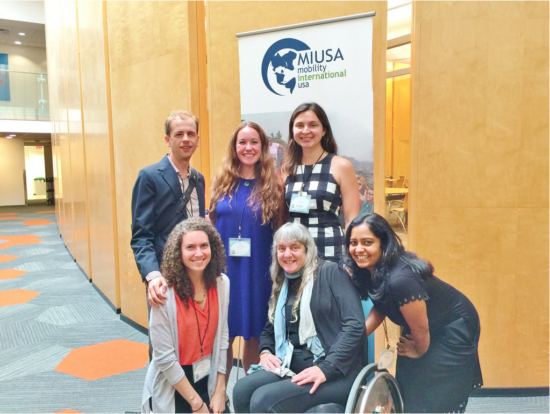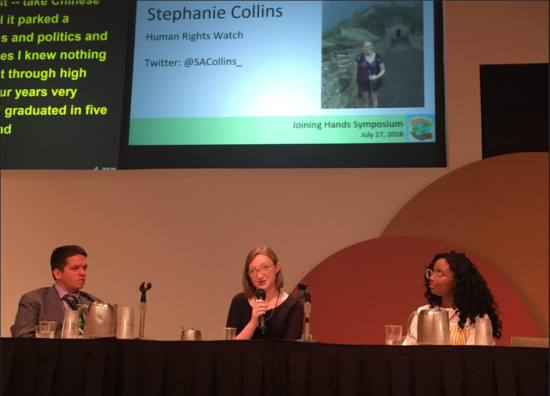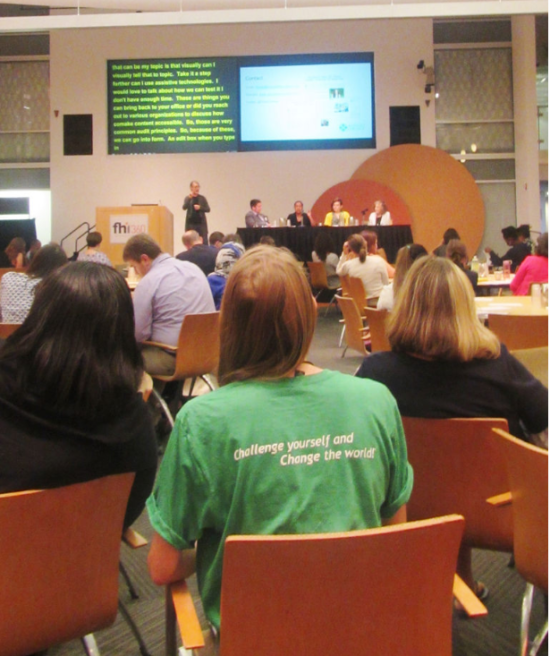By Justin Harford, Program Coordinator, Mobility International USA

Mobility USA staff gather at the Joining Hands Symposium in Washington, DC in July. Photo credit: Mobility International USA
Looking to promote more inclusive practices in your exchange programs? A one-day symposium might move the needle forward. In July, the National Clearinghouse on Disability and Exchange organized a symposium in Washington, DC focusing on methods to increase the participation of people with disabilities in international exchange programs. Here are some lessons from the event that may provide valuable perspectives for your next meeting or conference:
Identify the leaders. Ask yourself, who is including the most underrepresented participants in their programs? Who is going beyond “business as usual?” Put together a list of these changemakers and invite them to present at your event. Let them shape their workshop as they see necessary. If they are in the same field as the audience, they will have a good idea of what needs to be said. We have found many of our changemakers through previous conferences and trainings.
Build rapport. Take the time to get to know your changemakers. What brought them into the field? How can you create value for them? Apart from the benefit that speakers bring to the audience, speakers also benefit from having a chance to connect with others in the field. We try to create opportunities for them to learn from their audience, which also enhances their own practices.

Stephanie Collins (center) from Human Rights Watch speaks on a panel with other exchange program alumni with disabilities. Photo credit: Mobility International USA
Look to your community for session ideas. People send us questions throughout the year, both through our free inquiry and referral service, and our listservs, so we combined that data to help inform session topics. We also connect with people at conferences who share their own experiences, lessons learned, and reflections.
Capture diverse perspectives on your panels. It is easy to get caught up in one identity. But identities intersect, and that’s why we need to include intersecting groups of presenters. We had a number of exchange alumni from underrepresented countries—such as China, India, South Africa, and Uganda—share their experiences from abroad. Our success in this area was the result of many years of relationship building and prioritizing intersectional diversity. When we create a new podcast or publication, we always evaluate the diversity of perspectives represented.

An attendee wearing a MIUSA T-shirt listens in on the panel at the Joining Hands Symposium. Photo credit: Mobility International USA
The National Clearinghouse on Disability and Exchange is a project of the U.S. Department of State’s Bureau of Educational and Cultural Affairs, designed to increase the participation of people with disabilities in international exchange between the United States and other countries, and is supported in its implementation by Mobility International USA (MIUSA), a Global Ties U.S. National Program Agency.
